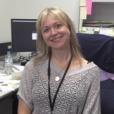
Project Members - Aerosol Sampling
Research team for the Aerosol sampling program

Showing 2461 - 2480 of 2483 results

Research team for the Aerosol sampling program

Role at ANSTO
Iveta provides technical support and maintains the laboratories.
Background

With the support of the Sir William Tyree Foundation, ANSTO is offering two career development opportunities for young Indigenous Australians in the area of work, health and safety.

Ruth Plathe completed an undergraduate degree, with honours, in Optoelectronics at Victoria University. Her honours year was spent with the Melbourne University, School of Physics, Optics group.


To contact ANSTO you can submit an enquiry or call one of our locations.

Radionuclides have been used routinely in medicine for more than 60 years. Nuclear medicine uses radiation to provide information about the functioning of a person's specific organs to diagnose or treat disease. The radionuclides used in medicine have half-lives ranging from a few minutes to several days in order to minimise the radiation dose the patient receives. For three unknown medical radionuclides, students will graph their decay over time, use the graph to calculate their half-life, and determine the identify and use of each radionuclide using background information provided.

ANSTO Environmental Researcher Scott Chambers uses a naturally-occurring radioactive gas called Radon-222 to trace sources of pollution in the atmosphere. This data set contains hourly observations of meteorology, trace gas pollutants, Radon-222 concentration and traffic density collected from Western Sydney University (Richmond campus) in 2016.

ANSTO has been measuring and characterising fine particle pollution from key sites around Australia for more than 30 years. This data set provides records from 1998 to 2019 of the concentration of 12 elements present in fine airborne particulate matter from an air sampling station located in Mayfield in Newcastle, NSW.

Combustion reactions in vehicles, household woodfires and coal-fired power plants all result in fine particle air pollution in the air we breathe. ANSTO has been measuring and characterising fine particle pollution from key sites around Australia for more than 30 years. This data set provides records from 1998 to 2019 of the concentration of 12 elements present in fine airborne particulate matter from an air sampling station located in Mayfield in Newcastle, NSW.

Latest information on the scheduled supply of our nuclear medicine production.

This poster explores information about the applications of nuclear science in your life.

Bring the periodic table to life in this interactive videoconference lesson. Students see real samples of common elements, learn about their history, properties and uses, and find out how the periodic table was developed during the 19th century. Students review atomic structure, elements and the organisation of today's periodic table, before applying their knowledge and skills in a fun periodic table game.
Cost: $90 per class.